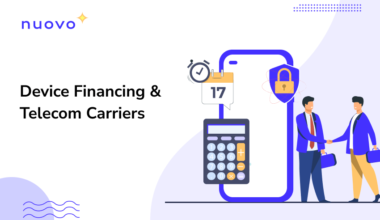Mobile education is redefining the way students receive new knowledge and skills. Students are comfortable with using technology and were fully immersed in the online world over the past few years.

As the world slowly shifts to the new normal, mEducation aims to assist schools to adopt an evolved learning model. However, better internet connectivity and affordable smartphones will need to play a crucial role in ensuring success.
What is Mobile Education?
Mobile education or ”mEducation” is a technology-driven learning solution that helps students learn anytime and anywhere. mEducation takes place whenever students use portable devices, such as smartphones, tablets or laptops to access educational content.
To learn and teach from multiple locations, mobile connectivity (2G, 3G, 4G supplemented by Wi-Fi) is a vital technology component of mobile learning. Telecom carriers or mobile network operators (MNOs) enable students and teachers to access learning materials, create content and collaborate with each other.
Increased availability of smartphones and other smart portable devices at lower costs is opening new opportunities for mobile education.

Benefits of Mobile Education
Leveraging mEducation to deliver education has several benefits including:
- mEducation enables students to access globally and locally relevant content. They can connect with teachers (and other students) at any time and any place to discuss and explore their learning together.
- Students have their own style and pace of learning, making it difficult for teachers to constantly track and respond to these differences. Mobile technologies make it easier for teachers to create differentiated learning experiences and provide meaningful feedback for learners with different learning abilities or preferences.
- Students often understand better and apply what they learn in discussions with their classmates. Unfortunately, traditional classroom environments are unfit for active participation, especially in large class sizes. With mobile technology, students can create their own content, share it with other students, and get better answers through collaboration.
- mEducation can be a cost-effective alternative to traditional approaches. Schools and other educational institutes can save money on overhead costs such as photocopying, printing, postage, textbooks, and staff travel.
- Online planning systems can use smartphones to coordinate and send reminders about classes, events, and vacations.
Drivers of Mobile Education
1. Mobile devices are rapidly developing
Today, half of the global population has enormous computing power at their fingertips. Mobile devices offer more memory, computing power, and bandwidth than a computer with the added advantage of mobility. The omnipresence of mobile phones, in both developed and emerging markets, is driving down prices of smartphones, according to technology market research firm IDC.
Read More: 10+ Popular Global Smartphone Statistics (2022)
2. The rise of the digital-native generation
The digital native generation has grown up under the influence of the internet and modern information technologies. Unsurprisingly, children and younger adults are more familiar and comfortable with technology than the previous generations. Such digital natives can easily adopt and use mEducation products without any formal training.
3. Growth of education mobile apps
Two years ago, billions of children were unable to physically attend schools amid government-mandated lockdowns. For elementary and secondary school students, mobile devices stepped in and education apps ensured that learning continued at home.
As per tech research firm Technavio, the education apps market will increase by $87.45 billion during 2022–2026. All signs indicate a shift in how education is delivered. Mobile technology will be incorporated into the learning environment as schools return to in-person teaching.
4. Government interests in mobile education
As governments recognize the importance of mEducation for their people, many countries are investing in mobile devices that enable new ways of learning. For example, in the Indian state of Uttar Pradesh, the government has announced to distribute 974,000 tablets and smartphones to enable new ways of learning. The government believes students will have instant access to documents and an uninterrupted learning experience.
Barriers to Mobile Education
- The cost of a smartphone remains a critical barrier to mobile ownership and internet access for learning. In low and middle-income economies, the cost of the handset and SIM is the largest obstacle in acquiring a handset.
- Unstable internet connectivity is a top challenge for mobile education. Slower internet connections or limited access from homes, especially in rural areas, can cause students to fall behind academically.
- Attending classes on mobiles can consume a lot of data. Mobile data usage during an average online learning class can vary between 400MB-1GB. Attending an online school for an entire day can be costly because of high data usage.
- Some teachers or instructors may lack basic technical knowledge and skills that delay the learning experience. Those skills can include, for example, video recording, setting up the mobile device, or installing education apps.
How Businesses can Support Mobile Education
- Telecom carriers can focus their core offerings to support mEducation. To do so, telecom carriers should target partners with other players in the education ecosystem. For example, partnering with schools to provide discounted data plans. This would provide an opportunity to access an additional revenue channel while ensuring the best speed internet under an affordable price range.
- Beyond providing connectivity, telecom carriers also have expertise in deploying and managing vast numbers of mobile devices. They can use their skills and experience to benefit educational institutions by deploying mobile education solutions. Telecom carriers can choose to reduce the IT and administrative burden further by offering content and data management services.
- Smartphone ownership is growing rapidly across the world, but not all young people are likely to own a smartphone. In emerging markets where mobile broadband services are the most common route to get online, smartphone manufacturers can provide mobile device financing schemes to drive handset ownership. OEMs can pledge smartphones to underprivileged students as a part of corporate social responsibility.
Wrapping Up
The last few years have accelerated the adoption of mEducation and influenced how students access learning. While students return to in-person teaching, mobile technology will remain an integral part of the learning model. To normalize the use of portable devices in a mainstream education setting, telecom carriers and smartphone manufacturers are going to play a key role in the immediate future.
Sources





